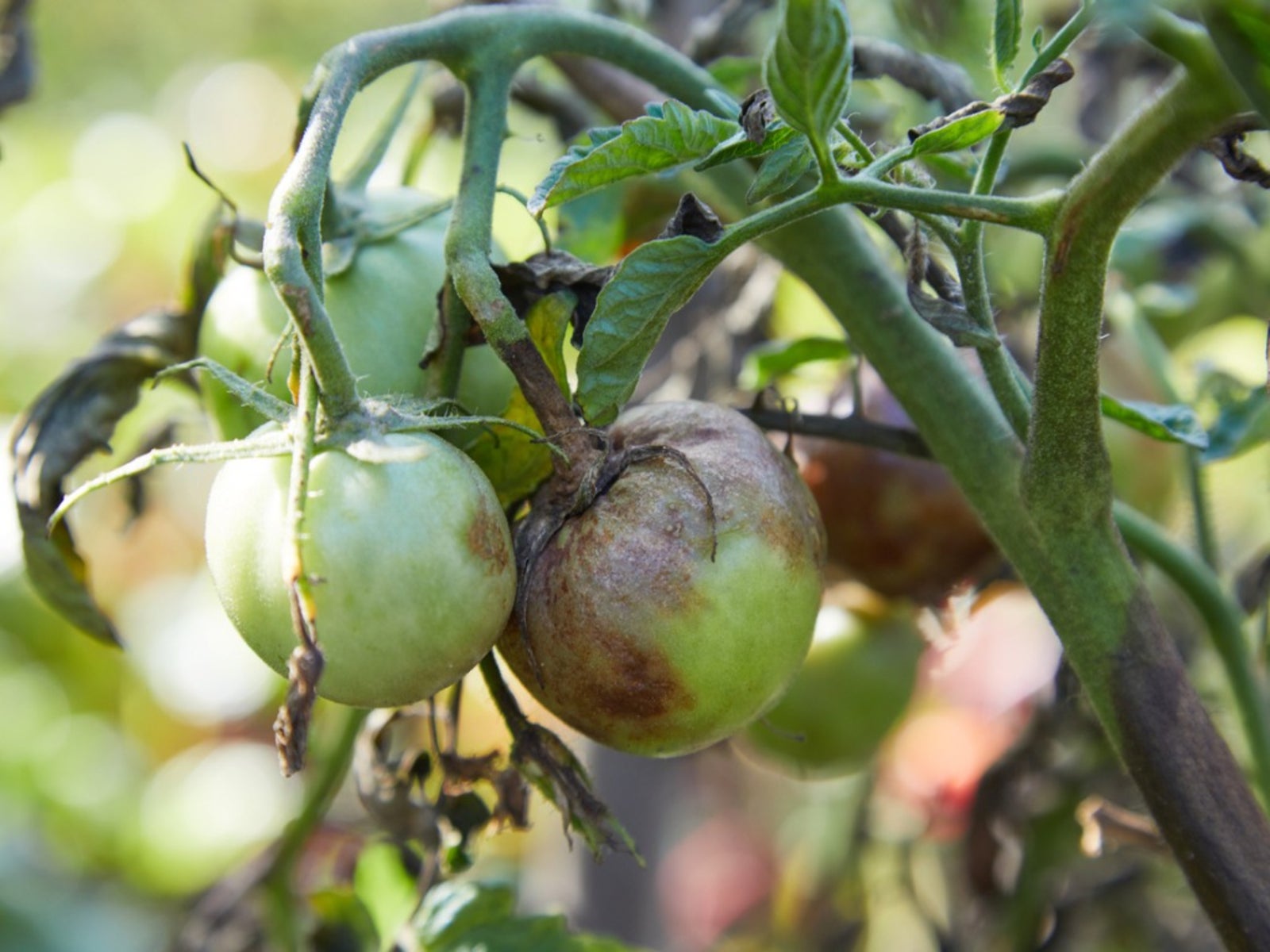Identifying And Preventing Late Blight On Tomatoes

Amy Draiss

Late blight tomato disease is the rarest of the blights that affect both tomatoes and potatoes, but it is also the most destructive. It was the leading factor in the Irish Potato Famine of the 1850's, when millions of people starved because of the devastation wrought by this deadly disease. On tomatoes, the fungus-like organism can destroy a crop within days if conditions are right. Vigilant observation and pre-treatment are the only defenses against this tomato disease.
Symptoms of Late Blight on Tomatoes
Phytophthora infestans, the pathogen that causes tomato late blight, needs tissue to survive. Sporangia from an infected plant are carried through the air, sometimes several miles, and once they land on a suitable host, germination is almost immediate. Tomato late blight needs only a few hours to take hold. All it wants is a little free moisture on the leaves from rain, fog, or morning dew.
Once infected, late blight symptoms will become visible in three or four days. Small lesions appear on stems, leaves, or fruit. If the weather is damp and the temperature moderate -- just like most rainy summer days -- the pathogen would sporulate around these lesions and the late blight tomato disease will be ready to spread to the rest of the garden and beyond.
The tiny lesions of late tomato blight are hard to spot and sometimes go unnoticed. The late blight symptoms become more obvious when the area around the lesions appears water soaked or bruised and turns grey-green or yellowed. Each late tomato blight lesion can produce up to 300,000 sporangia a day and each of those sporangium are capable of forming a new lesion. Once begun, late blight tomato disease can sweep through acres in a matter of weeks. Plant foliage will be completely destroyed and the fruit will be ruined by dark, greasy looking blotches of necrotic flesh.
Preventing Late Blight on Tomatoes
Sanitation is the first step in controlling tomato late blight. Clean up all debris and fallen fruit from the garden area. This is particularly essential in warmer areas where extended freezing is unlikely and the late blight tomato disease may overwinter in the fallen fruit.
Currently, there are no strains of tomato available that are resistant to late tomato blight, so plants should be inspected at least twice a week. Since late blight symptoms are more likely to occur during wet conditions, more care should be taken during those times.
For the home gardener, fungicides that contain maneb, mancozeb, chlorothanolil, or fixed copper can help protect plants from late tomato blight. Repeated applications are necessary throughout the growing season as the disease can strike at any time. For organic gardeners, there are some fixed copper products approved for use; otherwise, all infected plants must be immediately removed and destroyed.
Sign up for the Gardening Know How newsletter today and receive a free copy of our e-book "How to Grow Delicious Tomatoes".
Tomato late blight can be devastating to the home gardener and the commercial grower alike, but with close attention to weather conditions, garden hygiene, and early detection, this killer of crops can be controlled.

Jackie Rhoades began writing for Gardening Know How in 2010.
- Amy DraissDigital Community Manager